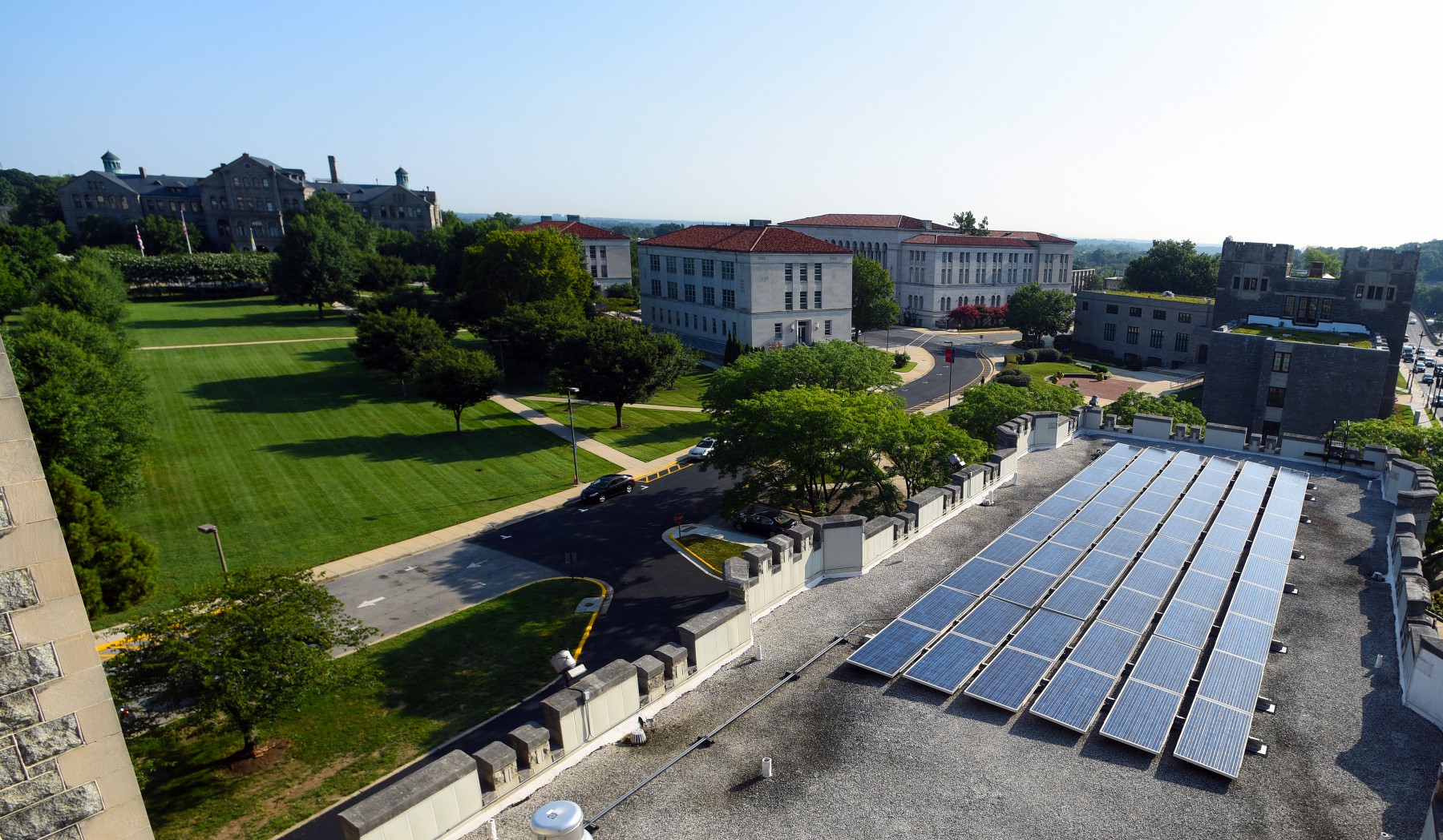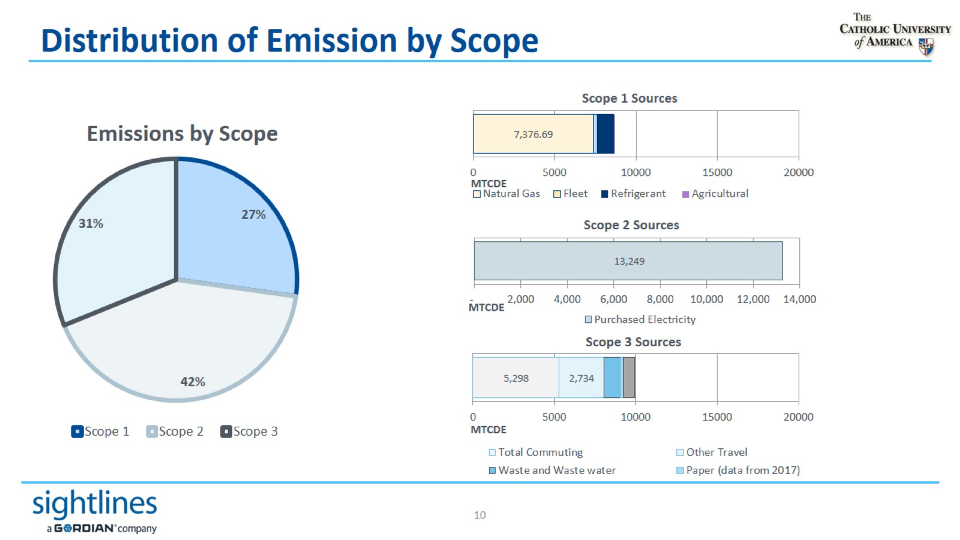
GHG Overview
The Office of Campus Sustainability conducts inventories of greenhouse gases (GHGs) that are released into the atmosphere as a result of The Catholic University of America's operations. GHGs are released as the result of everyday activities such as turning on lights and driving to campus. These emissions, which include carbon dioxide, methane, and nitrous oxide, contribute to global climate change. To learn more about the impact of emissions on climate change, review the Fourth National Climate Assessment. To learn how to reduce your emissions, check our our sustainable living blog posts.
The GHGs we focus on during inventories are those that have the most significant negative impacts on our environment.
Carbon dioxide (CO2) is the primary GHG emitted through human activities. Carbon dioxide enters the atmosphere through burning fossil fuels (coal, natural gas, and oil) and several other processes, and is removed from the atmosphere when it is absorbed by plants.
Methane (CH4) is emitted during the production and transport of coal, natural gas, and oil, as well as a result of livestock and other agricultural processes, land use, and the decay of organic waste in municipal solid waste landfills.
Nitrous Oxide (N2O) is emitted during agricultural, land use, and industrial activities, combustion of fossil fuels and solid waste, and during the treatment of wastewater.
GHG Emission Scopes
In GHG inventories, emissions are broken into three categories to better understand the source of emissions and how to control them.
Scope 1 - All Direct Emissions. Emissions that an organization can directly control. This category often includes on-site fuel combustion and vehicles.
Scope 2 - Indirect Emissions. Emissions from purchased energy sources, such as electricity, steam, heat, or cooling.
Scope 3 - All other Indirect Emissions. Emissions from sources that are not owned or controlled, but that the organization indirectly impacts. For example, purchased goods and services, commuting and business travel, and waste generation.
Sources of Campus Emissions

Source: Sightlines
GHG Emissions at Catholic University
In FY 2019, Catholic University emitted 31,249 metric tons of carbon dioxide equivalent emissions (MTCDE).
This is equivalent to the GHG emissions from 6,815 passenger vehicles driven for one year or 78 million miles driven by an average passenger vehicle. It is also equivalent to the CO2 emissions from 3.5 million gallons of gasoline consumed or 3.1 million smart phones charged.

The largest source of GHG emissions at Catholic University is purchased electricity and natural gas, which is used to power the campus. Travel and commuting by the Catholic U community also generate a significant amount of GHG emissions.
GHG Emissions Mitigation
Catholic University has implemented many GHG reduction strategies over the past few years.
-
The University offers students, staff, and faculty many alternative transportation options and incentives to reduce greenhouse gas emissions from commuting to and from campus. These include shuttles, bike racks, and public transportation and carpool benefits, among others. Learn more about sustainable transportation on campus.
-
In 2019, the University joined the U.S. Department of Energy’s Better Building Challenge. The Better Buildings Challenge requires the University to implement a robust energy efficiency plan to reduce campus energy use by 20% by 2026.
-
The university offsets 100% of its electricity use with renewable energy credits, accounting for the largest source of University GHG emissions.
Reducing GHG emissions requires actions from individuals and the greater Catholic University community. To learn how to reduce emissions associated with your everyday activities, check out our blog posts on energy and water use, zero waste, and mindful living.
